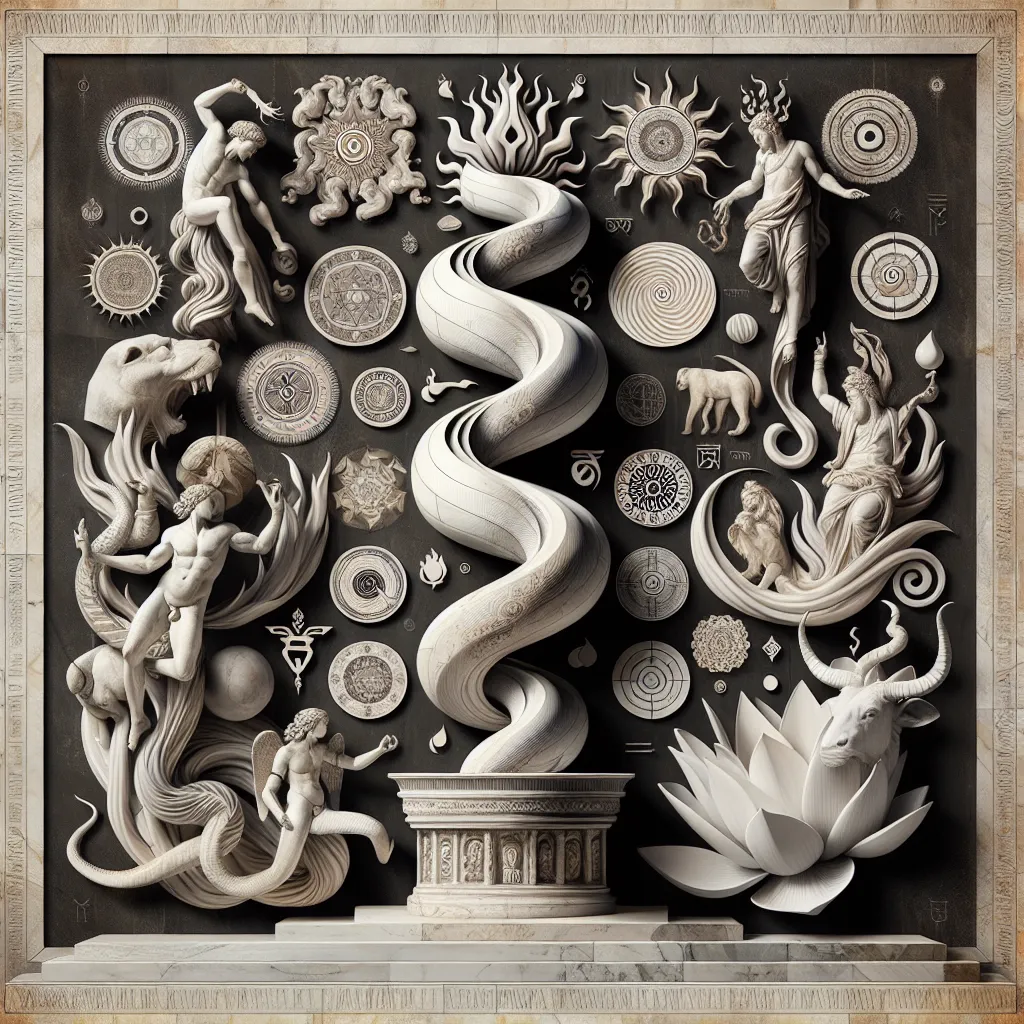
- Published on
- Authors

- Name
- You
The Legends of Kundalini: Myths and Stories from Various Traditions
Kundalini, often described as a serpentine force, lies dormant at the base of the spine in every individual. Its legendary awakening has been a subject of fascination, mystery, and awe for centuries across various spiritual traditions. This article embarks on a sacred journey, uncovering the myths and tales surrounding Kundalini, interweaving scientific insights with mystical wisdom.
Introduction to Kundalini
The Concept
Kundalini is a Sanskrit term that translates to "coiled serpent." In Yogic philosophy, it refers to a primal energy or Shakti, believed to reside at the base of the spine, coiled like a serpent. When awakened, it travels upward through the seven chakras, leading to spiritual enlightenment and profound personal transformation.
Kundalini in Science
Modern science has begun to delve into the physiological and psychological effects of Kundalini awakening. Neuroplasticity, the brain's ability to reorganize itself, and the release of neurotransmitters during meditation and yoga practices offer a glimpse into the complex interplay between mind and body during Kundalini arousal.
Myths and Stories Across Traditions
Hinduism
The Goddess Shakti
In Hindu mythology, Kundalini is often depicted as Goddess Shakti, the female aspect of the divine, lying dormant until awakened by Shiva, her consort. This union symbolizes the merging of the divine feminine and masculine, leading to a state of bliss and cosmic consciousness.
- Shiva and Shakti: The dance of Shiva and Shakti represents the dynamic interplay of energies in the universe.
Buddhism
The Serpent Naga
In Buddhist tradition, the Kundalini energy is sometimes symbolized by Nagas, the mystical serpents. When Buddha attained enlightenment, it is said that a Naga named Mucalinda emerged to shield him, representing the protective and transformative power of Kundalini.
Native American Traditions
The Serpent and the Rainbow
The Hopi and other Native American cultures speak of a serpent-like energy within the earth and ourselves. The Rainbow Serpent or Feathered Serpent legends symbolize transformation and the inseparable link between humanity and the cosmos.
- Hopi Prophecy: The prophecy speaks of the return of balance and harmony through activating this sacred energy within.
The Awakening Process
Yogic Practices
Hatha Yoga and Pranayama
Practices like Hatha Yoga and Pranayama (breath control) are designed to purify and prepare the body for Kundalini awakening. The process is gradual, requiring discipline and dedication.
Scientific Approach
Neuroplasticity and Meditation
Research shows that meditation can significantly alter brain structure and function, supporting the transformative experiences reported by those undergoing Kundalini awakening.
| Practice | Description | Benefits |
|---|---|---|
| Hatha Yoga | Physical postures (asanas) and breath work | Increases flexibility, strength, and focus |
| Pranayama | Controlled breathing techniques | Enhances lung capacity, calms the mind |
| Meditation | Focused mental practice | Reduces stress, improves mental clarity |
Conclusion
The legends of Kundalini resonate deeply across various spiritual traditions, each offering a unique perspective on this profound energy. By blending the ancient myths with modern scientific understanding, we gain a more holistic view of the transformative power of Kundalini. Whether you approach it through yoga, meditation, or scientific exploration, the journey of awakening is a path to greater self-awareness and unity with the cosmos.
Final Thoughts
As we continue to uncover the mysteries of Kundalini, let us honor the rich tapestry of myths and stories that guide us. By embracing both the mystical wisdom of the ancients and the advanced knowledge of modern science, we embark on a journey towards holistic enlightenment and self-discovery.
